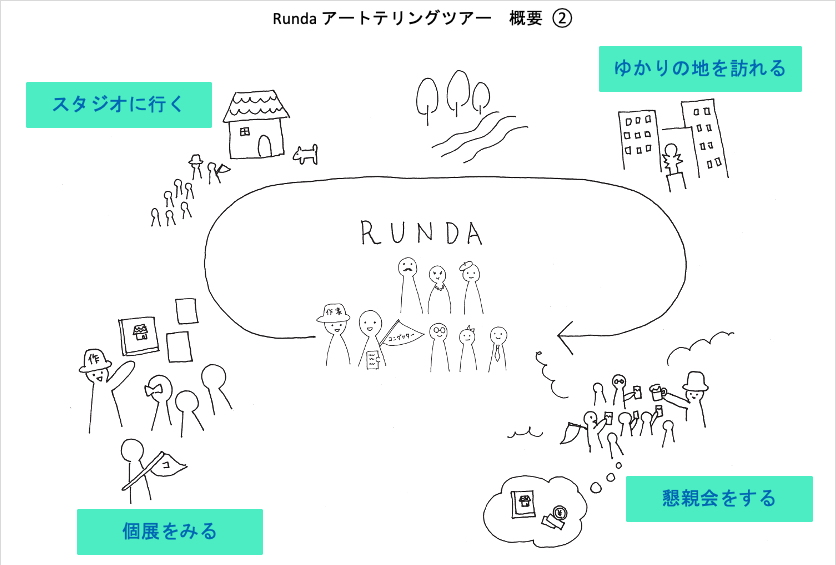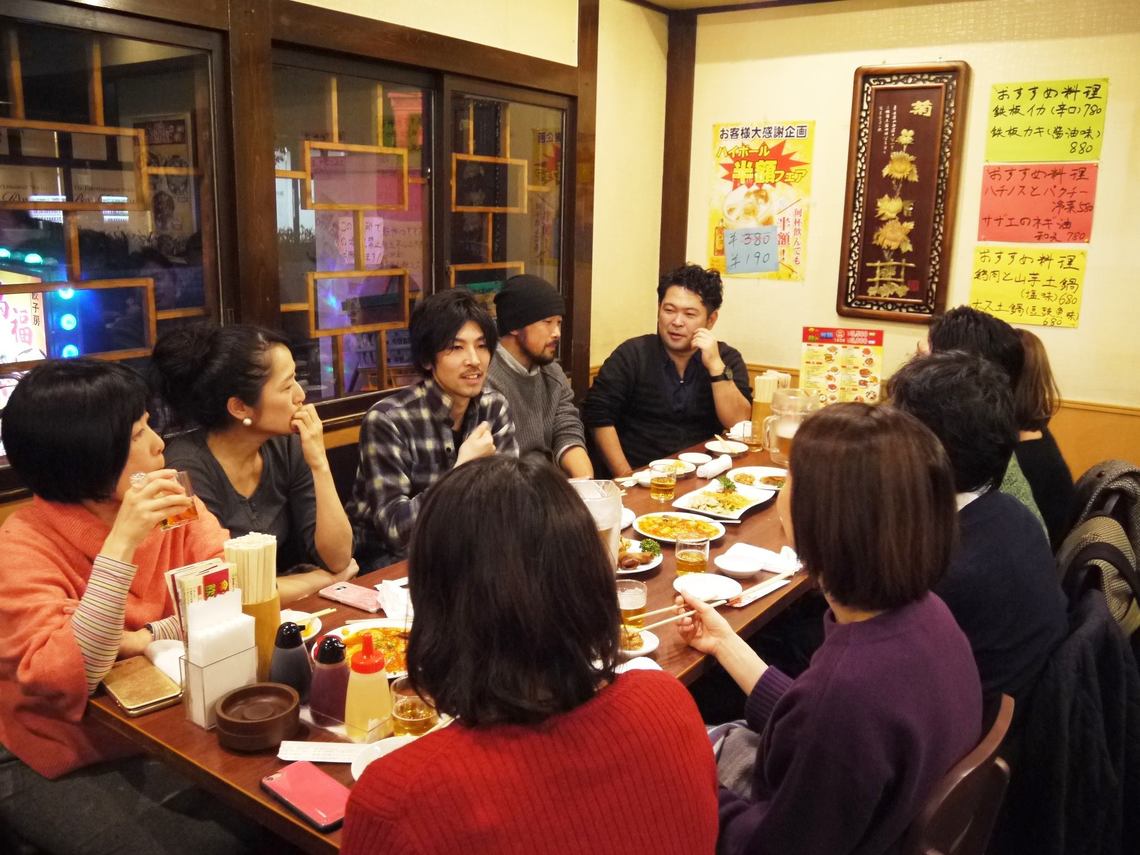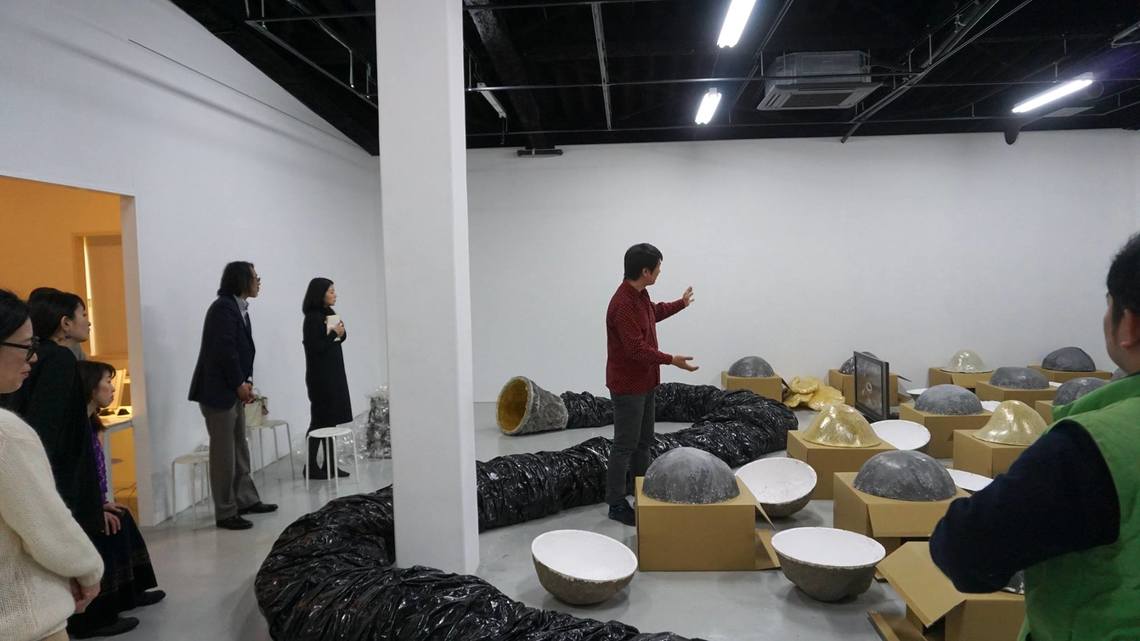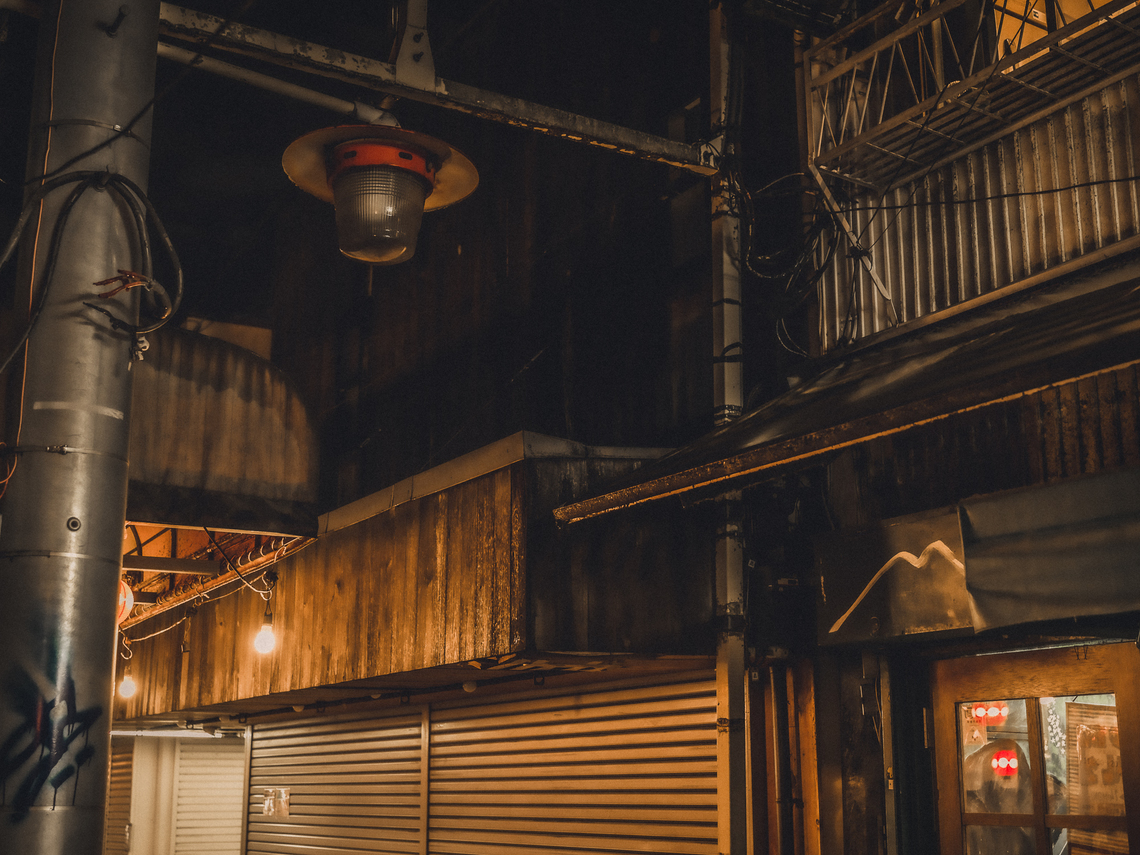I am Takuma Uehara, a member of Bijutsu Kaido(※) and one of the authors of "Art in Business—The Power of Art that Works for Business." In the second installment I authored, we explored the internalization of art experienced by business professionals. The third installment featured a contribution by Hiroshi Onishi, who conducts scientific research on the art market at Tokyo University of Science, introducing "The Effects of Art in Business."
(※) Bijutsu Kōro: An art unit supporting business creation that incorporates art power. Dedicated website.
"Art in Business" introduces how business professionals who have internalized art first encountered it. These encounters can be broadly categorized into: ① viewing many works, ② engaging with works, ③ talking with people, ④ trying to draw, and ⑤ purchasing works. Let me share practical examples—or rather, to be honest, my own experiences—of creating opportunities to encounter art through Art in Business.
For many people, Japanese contemporary art still feels like "something unrelated to me."
To understand and enjoy contemporary art, one must view a vast number of works and grasp its history and knowledge. However, if the barrier remains too high, art remains confined within the art world, and artists receive no funding.
Thus, based on the hypothesis that "encountering the artist rather than just the work might help people feel the appeal of art," I started a project. That is "RUNDA," an art-telling tour where you talk with artists and encounter their work. RUNDA is practiced as a tour that allows participants to touch upon all the opportunities to encounter art mentioned at the beginning, bit by bit.
Through introducing this initiative, I'd like to revisit the meaning of "owning art."
From an Art School Assignment to a Lifework
The catalyst for starting this tour was an art school program hosted by the NPO Arts Initiative Tokyo (AIT) (see past article). As the culmination of a six-month program, we were tasked with planning an art-related project. It was there, alongside fellow students at the time, that we conceived the prototype for RUNDA. After the course ended, we launched this activity as an independent extracurricular endeavor starting in 2016.
To ensure each participant has a deep experience, we deliberately keep the group small, yet we've had a cumulative total of over 200 participants so far. Initially, participants were people I met through AIT, but now we receive applications from a wide range of people, primarily business professionals, spanning their 20s to 60s.

Ten years without the concept of "buying art" despite being an art school graduate
Even though I run these activities now, I must admit I never truly grasped the concept of "ordinary individuals buying art" myself. This was despite majoring in art management at art school during my student days.
Looking back, I think one reason was the context of the times. While my university relatively focused on the relationship between art and business, most Japanese art universities back then emphasized training more academic professionals, like museum curators or curatorial staff. So, perhaps I unconsciously held the perception that art was "something bought by organizations or museums."
My first art purchase came just before turning 30. It was Yuken Teruya's piece titled "Heroes."

The reason I decided to own a painting costing roughly two bonus payments at the time? While being captivated by the work itself was certainly a factor, the biggest push came from "fate." Teruya was actually my senior in high school, and we'd even shared drawing lessons, so I knew of him before encountering this piece. Furthermore, a university classmate of mine ( Mr. Makitaka Maki of Makifine Arts ) worked at the gallery where the piece was displayed.
Buying a piece created by a senior from a classmate...
In that moment, something suddenly clicked. It was the realization that "it's crucial for money to flow back to the artist" – an idea I hadn't grasped during my university days, yet one absolutely essential for the development of the art industry.
Owning art not through the work itself, but through human connections. I wanted others to experience this foundational moment too. From there emerged RUNDA's concept—still rare in the art world today—of "providing a space to hear directly from artists" and "bridging the gap between artwork and viewer."
Visiting the places that inspired the exhibited works alongside the artist and engaging in dialogue—I felt this act itself could be positioned as a form of art.
Some tour participants purchased pieces right then and there. Others surprised me months later by announcing, "I've decided to buy."
Works by contemporary artists affiliated with galleries start around ¥100,000 at the low end. This might be a bit of a hurdle for business professionals. After all, even I, who majored in art management, took nearly ten years from graduating university before purchasing my first piece.
Naturally, not every RUNDA participant buys a piece to take home. Still, it's incredibly rewarding and fulfilling to see my humble, personal initiative become someone's gateway into art.

One of the things RUNDA values most: the post-tour drinks with the artists. (RUNDA Session 6, December 2, 2017)
Purchasing is a boundary line
Why do I place such emphasis on "buying"? As mentioned earlier, the importance of money reaching the artists is one reason, but it's not the only one.
I believe "truth only manifests in the moment of purchase."
This applies not only to art, but also to the consumer goods and automobiles I handle in my day job as a marketer.
In a capitalist economy, purchasing is a crucial action.
Articles and videos on media platforms that don't require membership registration (like Dentsu Inc. News), free samples of gum or lotion handed out on the street, test drives of cars or electric bikes. People readily say "I like it" about these things. That's because they aren't spending their own money. You could even call it a kind of irresponsibility.
Now, what if you had to pay for these things? When exchanging your own money for a product, people rigorously judge whether it's worth the price. This is where the dialogue between the product and the individual truly begins.

(From RUNDA Vol. 1, February 27, 2016)
Art is the same. There's a huge difference between simply viewing the same piece (though admission fees may be required) and engaging with the artist and work through purchase.
"Do I want this piece in my home?"
In other words, it's about owning a "part of the artist's body" they created, making it part of your own "living flesh and blood." Or making that decision.
Both the owner who accepts the work and the artist who is accepted undergo a change in how they interact and relate to each other through this process. RUNDA is also a very "artistic" installation stage where you can sometimes witness up close these precious moments when you can hear the true voices of both seller and buyer.
We encourage you to experience this dialogue with the artist.
When the artist enters the space between the work and the viewer, it becomes the shortest route to understanding the work. By setting aside complexities like historical context or prior knowledge and engaging directly with the artist, you can feel how art is actually something close to everyday life.
To allow as many people as possible to experience this, RUNDA is launching its first-ever online tour. Our guest artist for this tour is photographer Shunichi Oda, known for his work "Night Order," which captures "Tokyo's night streets under the state of emergency" from two distinct perspectives.

A work objectively and documentarily capturing Tokyo's night streets under the state of emergency (Kichijoji Harmonica Yokocho)

An abstract work capturing the lights illuminating Tokyo's night streets, subjectively conveying their warmth and joy (under the Yurakucho overpass)
This project is a fascinating initiative with a social action element: a portion of the proceeds from the artwork sales will be donated to restaurants struggling financially during the state of emergency. It has already garnered significant attention, raising over 1.2 million yen within the first week of its launch on the crowdfunding service Makuake.
The online tour will feature Mr. Oda sharing his passion behind the work and the real voices of the restaurant owners directly affected. Following the talk session, RUNDA's signature "Drinks with the Artist" event will also be held online.
Even if visiting galleries or museums feels like a high hurdle, please feel free to join online. You're sure to encounter new artworks and discover new aspects of yourself.
Details for RUNDA's "Online Art Tour" can be found here.









